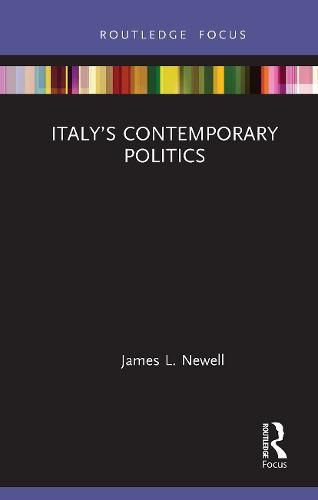Readings Newsletter
Become a Readings Member to make your shopping experience even easier.
Sign in or sign up for free!
You’re not far away from qualifying for FREE standard shipping within Australia
You’ve qualified for FREE standard shipping within Australia
The cart is loading…






In early 2020 Italy was a country whose political parties stood as significant obstacles in the way of resolution of its social and economic problems. The purpose of this book is to help the reader to understand how Italian politics had reached this point. It does this by tracing the most significant processes of political, economic and social change to have marked Italian history in recent years back to their roots in the Italian political system as it emerged at the end of the Second World War. Starting with the restoration of democracy, the volume discusses the post-war party system and how it came under increasing pressure from the mid-1970s. From there it discusses the political upheavals of the early 1990s and the transformations they led to, the rise and fall of Silvio Berlusconi, and the watershed election of 2018. In short, the book provides a narrative. Narratives tell us who we are, where we have come from, where we are now and where we are going. Without them, we cannot make sense of the world. At the end of this narrative, if it has done its job properly, Italian politics and current affairs should ‘make sense’ if before they seemed confusing.
$9.00 standard shipping within Australia
FREE standard shipping within Australia for orders over $100.00
Express & International shipping calculated at checkout
In early 2020 Italy was a country whose political parties stood as significant obstacles in the way of resolution of its social and economic problems. The purpose of this book is to help the reader to understand how Italian politics had reached this point. It does this by tracing the most significant processes of political, economic and social change to have marked Italian history in recent years back to their roots in the Italian political system as it emerged at the end of the Second World War. Starting with the restoration of democracy, the volume discusses the post-war party system and how it came under increasing pressure from the mid-1970s. From there it discusses the political upheavals of the early 1990s and the transformations they led to, the rise and fall of Silvio Berlusconi, and the watershed election of 2018. In short, the book provides a narrative. Narratives tell us who we are, where we have come from, where we are now and where we are going. Without them, we cannot make sense of the world. At the end of this narrative, if it has done its job properly, Italian politics and current affairs should ‘make sense’ if before they seemed confusing.